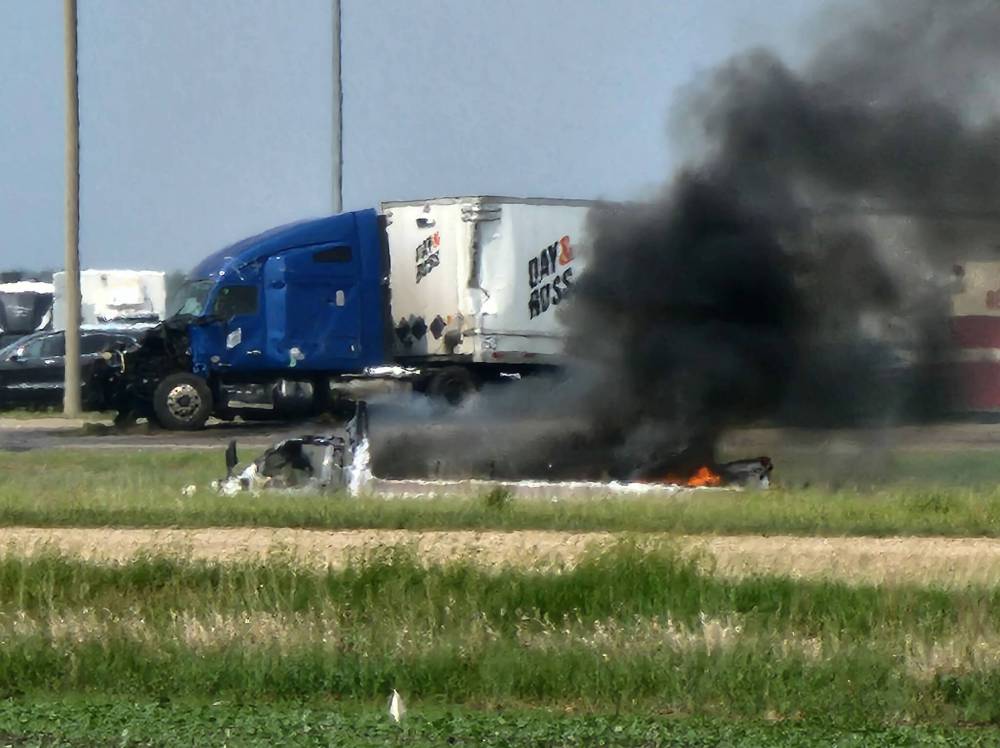New ideas to prevent highway tragedy
Advertisement
Read this article for free:
or
Already have an account? Log in here »
To continue reading, please subscribe:
Monthly Digital Subscription
$0 for the first 4 weeks*
- Enjoy unlimited reading on winnipegfreepress.com
- Read the E-Edition, our digital replica newspaper
- Access News Break, our award-winning app
- Play interactive puzzles
*No charge for 4 weeks then price increases to the regular rate of $19.00 plus GST every four weeks. Offer available to new and qualified returning subscribers only. Cancel any time.
Monthly Digital Subscription
$4.75/week*
- Enjoy unlimited reading on winnipegfreepress.com
- Read the E-Edition, our digital replica newspaper
- Access News Break, our award-winning app
- Play interactive puzzles
*Billed as $19 plus GST every four weeks. Cancel any time.
To continue reading, please subscribe:
Add Free Press access to your Brandon Sun subscription for only an additional
$1 for the first 4 weeks*
*Your next subscription payment will increase by $1.00 and you will be charged $16.99 plus GST for four weeks. After four weeks, your payment will increase to $23.99 plus GST every four weeks.
Read unlimited articles for free today:
or
Already have an account? Log in here »
Hey there, time traveller!
This article was published 16/06/2023 (872 days ago), so information in it may no longer be current.
It was just an early morning drive to Brandon on the second of May.
The weather was clear, and road conditions on the TransCanada Highway were good.
At Carruthers Road, on the eastern edge of Austin, there was a pickup truck getting ready to cross the highway.

The Brandon-bound driver’s thought seconds before the accident?
“They have to see me. They’re not going to pull out.”
They pulled out.
The resulting crash left the highway driver with a serious injury.
Anyone driving the TransCanada, or even the Perimeter Highway, has had the same fear, watching another vehicle either waiting to cross the highway, or else holding up on the crossroad between the lanes of the divided highway.
Eight days later, on May 10, a vehicle crossing the TransCanada at the exact same Austin intersection collided with a car heading east on the TransCanada. That accident killed a 43-year-old woman from North Norfolk.
The distance between the Carberry exit and the two accidents near Austin is about 34 kilometres.
This may seem like a strange way to talk about the horrible accident at the Carberry intersection of Route 5 and the TransCanada on Thursday, an accident that killed 15 people and injured 10 more, people travelling from Dauphin to the Sand Hills Casino.
It is very early days — the pain is very fresh. The accident only happened hours ago. The scale of the accident is much larger, the results far more horrific. But the causes — though yet to be fully determined — are likely very similar.
The Carberry exit is known to be a dangerous intersection: two kilometres before the intersection, the speed limit drops from 110 km/h to 100 km/h.
There have been other accidents at the Carberry exit. In 2017, a pickup truck crossing the TransCanada, heading north on Route 5, was T-boned by a car on the highway, leaving two drivers injured. In August, 2016, a car heading north on Route 5 struck a semi heading east on the TransCanada. In that accident, the driver of the car was killed.
But it’s not just Route 5. Any road crossing a high-speed divided highway has well-known and serious risks.
Divided highways are safer for drivers who are actually on them — chances of a high-speed head-on collision are drastically reduced.
But crossing a divided highway is a different story, one that requires a series of complicated judgment calls. There is just so much going on: drivers have to consider high-speed traffic from both directions, and often feel the pressure of holding up other traffic while they try to decide if there is enough space in traffic for them to move.
Here’s the Wisconsin Department of Transportation’s take: “A conventional intersection on a four-lane divided highway has forty-two (42) conflict points… These conflicts have an increased potential for right-angle crashes which often result in severe injuries. These crashes typically occur on the far side of the four-lane divided highway when a driver attempts to cross the highway or turn left onto the divided highway.”
The Wisconsin DOT is moving to a type of intersection known as a restricted crossing U-turn — instead of driving across four lanes of traffic, drivers on secondary roads turn right onto divided highways, and then make a planned u-turn from a designated lane further down the highway, coming back to their route.
The benefits are pretty clear, according to the Wisconsin DOT: the changed intersection “reduces crash potential — particularly far side right angle crashes. Simplifies driving task — only required to look at one direction of traffic at a time. Provides additional space for longer vehicles to store in median. Easily retrofitted — often without purchasing additional right-of-way. Low cost compared to an interchange or overpass while continuing to provide access.”
It can’t be done everywhere. But one is already being built at a crucial Saskatchewan intersection.
The decrease in crashes? A U.S. study in 2010 found that to be 75 per cent.
2010 was 13 years ago. It’s time to start fixing the dangers we know about.
History
Updated on Thursday, June 22, 2023 9:47 AM CDT: Fixes cutline












